Belvedere Palace Vienna stands as a monumental beacon of Austria's imperial past and its enduring cultural legacy. This majestic complex, with its sprawling gardens, stunning architecture, and invaluable art collections, offers a journey through time, art, and history.
Note: This article contains affiliate links. In case you purchase something through one of these links, we may receive a small commission at no extra cost for you. Thank you for helping us keep creating the free content on this website!
The Architectural Grandeur of Belvedere
Nestled in the heart of Vienna, Austria, the Belvedere historical building complex stands as a testament to Baroque elegance, encompassing a duo of palatial structures known as the Upper and Lower Belvedere. This architectural marvel doesn't end there; it also boasts an Orangery, reminiscent of a bygone era where citrus trees danced under the European sun, and the Palace Stables, which whisper tales of regal splendor and equine grace. Each corner of the complex is a chapter in history, inviting exploration and admiration.
The Architectural Grandeur of Belvedere is a testament to the magnificence and intricate design that characterizes much of European baroque architecture. Nestled in the heart of Austria's capital, the Belvedere Palace Vienna stands as a shining example of the artistic and cultural achievements of the 18th century. This historic complex, comprising two majestic palaces—the Upper and Lower Belvedere—and set amidst sprawling, meticulously landscaped gardens, reflects the opulence and sophisticated taste of its original patron, Prince Eugene of Savoy.
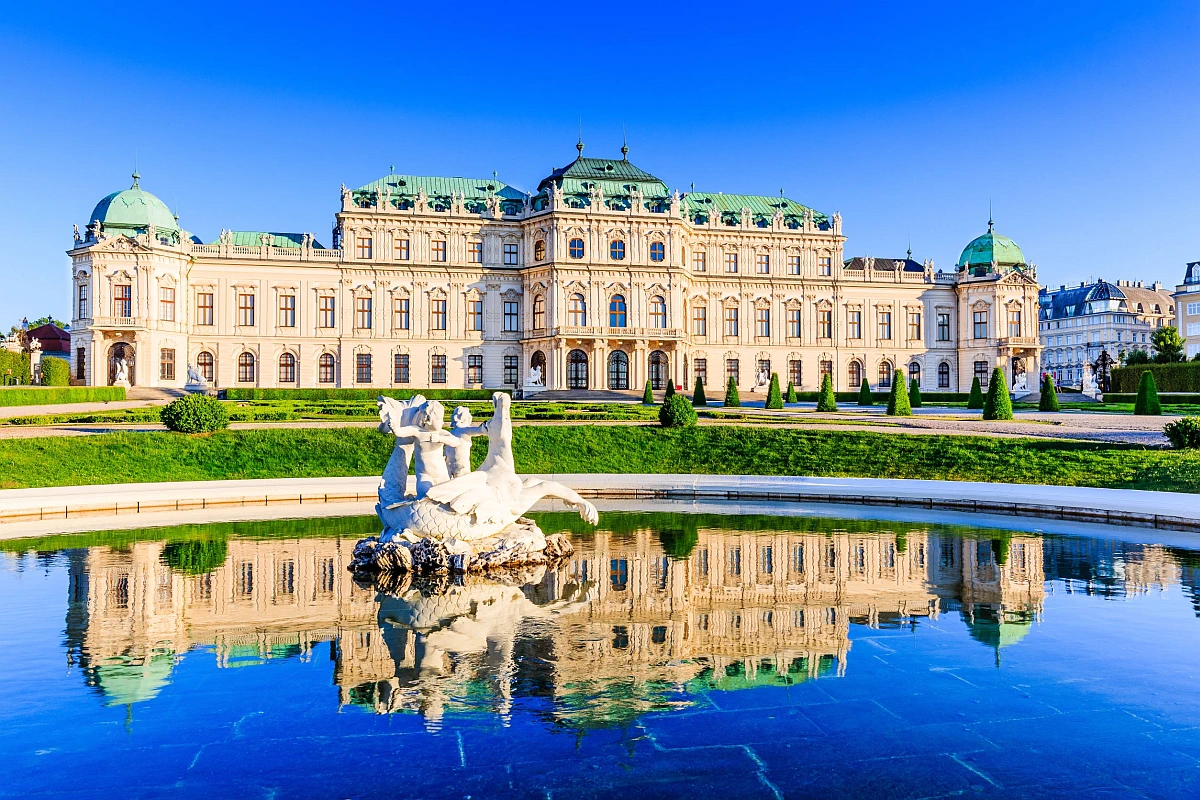
The construction of the Belvedere Palace Vienna was overseen by the renowned architect Johann Lukas von Hildebrandt, who was tasked with creating a summer residence that would surpass all others in beauty and grandeur. The result is a stunning blend of architectural elements, combining the Italian Baroque's dynamism with the French classical style's elegance and symmetry. The palaces are adorned with elaborate sculptures, frescoes, and stuccowork, showcasing the craftsmanship and artistic prowess of the era.
The Belvedere's gardens are an integral part of its charm, designed in the formal French manner yet softened with elements of the English landscape garden. These gardens not only enhance the palatial facades but also serve as a green oasis in the urban landscape, inviting visitors to wander through their carefully arranged paths, sculptures, and water features. The complex's role as a cultural hub extends beyond its architectural beauty; it houses the Belvedere Museum, which boasts an impressive collection of Austrian art, including the world's largest collection of Gustav Klimt paintings.
Brief history of the Belvedere building complex
Comprising two splendid palaces, the Upper and Lower Belvedere, along with beautiful gardens that stretch between them, the Belvedere Palace Vienna was originally conceived as a summer residence for Prince Eugene of Savoy. This ambitious project was brought to life in the early 18th century (1712), designed by the prominent Baroque architect Johann Lukas von Hildebrandt. The complex not only served as a luxurious home but also as a display of Prince Eugene's power and artistic sensibilities, featuring elaborate gardens and a collection of art that were unparalleled in their time.
The Upper Belvedere was completed in 1723, serving not only as a residence but also as a venue for lavish parties and state affairs, showcasing the prince's influence and wealth. The Lower Belvedere and the Orangery, constructed earlier, were used for living quarters and as a winter garden, respectively. Together, they encapsulate the opulence and the aesthetic of the Baroque period, with their ornate facades, elaborate stucco decorations, and expansive, meticulously designed gardens.
On the 21st of April, 1736, the corridors of the Vienna City Palace whispered the last breath of Prince Eugene of Savoy into history. With no legally recognized will to guide the distribution of his vast estate, Emperor Charles VI saw fit to convene a special commission. Their verdict? The elevation of his niece, Princess Victoria, as the sole beneficiary of his legacy, weaving a new thread into the tapestry of their dynasty.
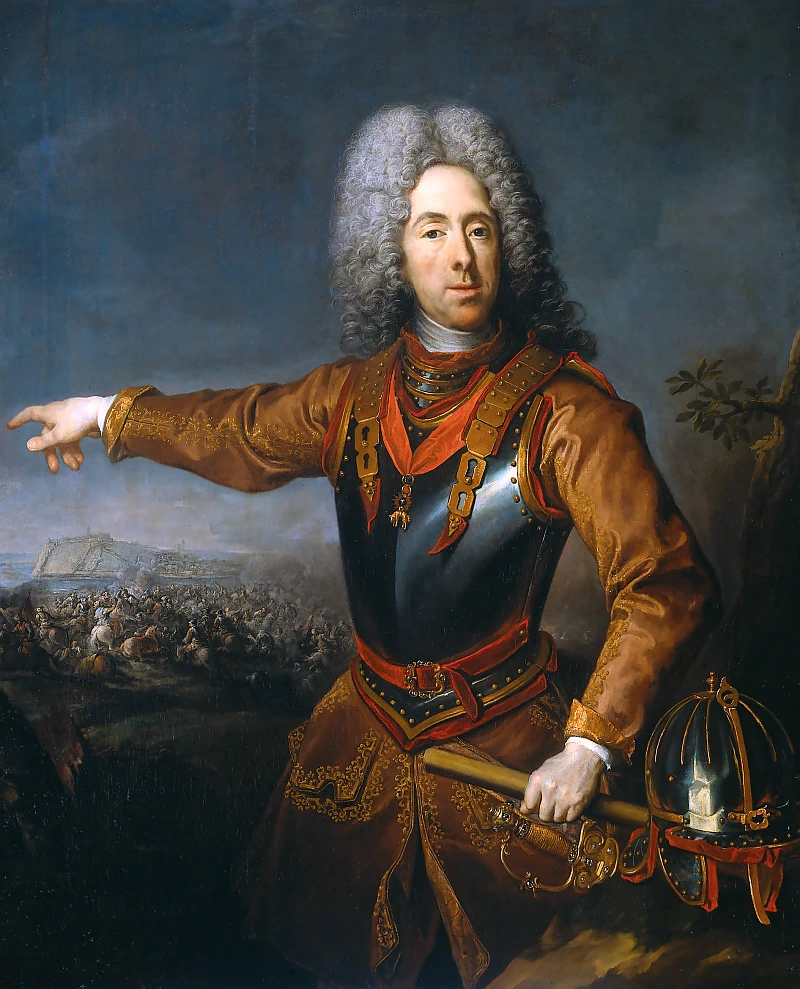
In 1752, Maria Theresa, the Archduchess of Austria and sovereign of the Habsburg dominions, acquired the Belvedere estates, marking a significant addition to her extensive portfolio of properties.
On the seventeenth day of April in the year 1770, the Belvedere Palace bore witness to the opulent nuptials of Maria Antonia, offspring of the Emperor, and the French heir apparent, who would ascend as Louis XVI. This grand occasion was characterized by festivities of a lavish nature.
In the year of 1776, amidst the fervor of Enlightenment and the shifting sands of power, Maria Theresa, alongside her progeny, Emperor Joseph II, embarked on a visionary journey. Their decision? To transplant the Imperial Picture Gallery from the confines of Stallburg to the grandeur of the Upper Belvedere. This move wasn't merely a change of scenery; it was a bold stride towards Enlightened Absolutism, a declaration that art should not be the exclusive preserve of the aristocracy but a treasure to be shared with the public at large.
The following year, 1777, marked a monumental moment in history: the inauguration of the Picture Gallery at its new abode, the Upper Belvedere. This event wasn't just a grand opening; it was the dawn of a new era, positioning the gallery as one of the first beacons of public museums across the globe, a testament to the idea that culture and knowledge should be accessible to all, not just the privileged few.
Fast forward to 1888, the winds of change blew once more. The imperial collections found a new home, this time in the purpose-built halls of the Kunsthistorisches Museum. The grand opening on October 17, 1891, was more than just a ceremonial affair; it was a reflection of the evolving relationship between art, society, and the spaces they inhabit. Meanwhile, the Belvedere palaces entered a period of quietude, stepping back from their role as a museum, perhaps in contemplation of their past glory and future promise.
In 1896, the threat posed by French revolutionaries prompted the relocation of numerous masterpieces to Serbia for their safeguarding. It was under Austrian Emperor Franz Joseph I's directive that the Upper Belvedere underwent transformation to become the future home of his designated successor, Franz Ferdinand. By 1903, in a gesture to honor the creativity of Austrian Modernist artists, Franz Ferdinand inaugurated the Modern Gallery, making it accessible to the masses.
Prince Eugene of Savoy demanded a masterpiece from Johann Lukas von Hildebrandt. Before designing the Palace, Hildebrandt took inspiration from several buildings but primarily focused his study on the Chateau of Versailles in Versailles, France.
Overall, over the centuries, the Belvedere Palace Vienna has undergone numerous transformations, adapting to the changing times and requirements of its occupants. After the death of Prince Eugene, the complex saw various uses, including serving as a military barracks and later as a public museum. Today, it is one of Vienna's most prized landmarks, attracting visitors from around the globe.
Today, the Belvedere Palace, recognized as a UNESCO World Heritage Site, stands as a beacon of cultural heritage in Austria. This historic site is not just an architectural marvel but also a dynamic center for the arts, hosting an exceptional collection of Austrian artwork.
The palace's galleries are a testament to the rich tapestry of Austria's artistic history, featuring a broad spectrum of art ranging from the medieval era to contemporary times. Among its treasures are seminal works by Austrian luminaries such as Gustav Klimt and Egon Schiele, whose pieces are celebrated worldwide for their innovation and emotional depth.
Beyond its function as an art museum, the Lower Belvedere Palace enriches the cultural landscape through its array of temporary exhibitions and special events. These initiatives spotlight the contributions of various Austrian artists, offering fresh perspectives and enriching the public's understanding of Austria's artistic legacy.
The Belvedere Palace is more than a repository of art; it is a vibrant cultural institution that fosters education, engagement, and scholarly research. Through its educational programs, guided tours, and support for academic inquiry, the palace ensures the ongoing preservation and appreciation of Austria's cultural heritage, making it an invaluable resource for both scholars and art enthusiasts alike.
The Gardens of Belvedere Palace Vienna
The gardens of Belvedere are as much a work of art as the palace itself. These meticulously landscaped gardens, adorned with sculptures, fountains, and rare botanical specimens, offer a serene escape from the city's hustle and bustle.
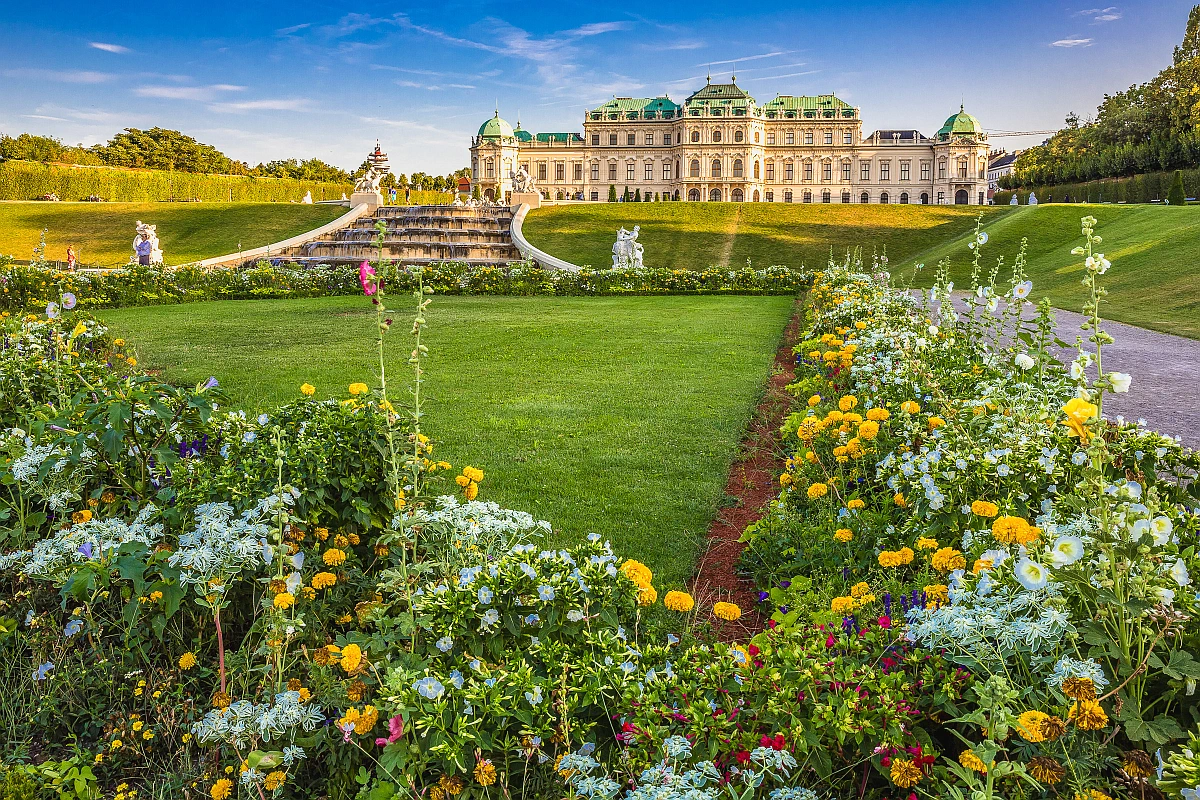
At the core of the gardens' design is the principle of symmetry, a hallmark of Baroque aesthetics, which is evident in the precise arrangement of pathways, sculptures, and water features. The main axis leads visitors from the Lower to the Upper Belvedere, offering a visual and experiential journey through carefully curated landscapes. The inclusion of mythological statues and fountains throughout the gardens enhances the sense of walking through a living gallery of art and nature intertwined.
Belvedere Palace Vienna and its gardens stand as a cultural heritage site, attracting visitors from around the globe who come to marvel at its historic beauty and artistic significance. The gardens, in particular, offer a tranquil retreat from the bustle of the city, where one can admire the intricate designs and the panoramic views of the palace against the Vienna skyline. Seasonal changes bring new dimensions to the gardens, with spring blooms and autumn hues providing a constantly evolving backdrop to the timeless elegance of the Belvedere complex.
Art and Exhibitions at Belvedere
Beyond its beauty, the Belvedere serves as a prestigious museum that houses an extensive collection of Austrian art, dating from the Middle Ages to the present day. The art exhibitions at Belvedere are renowned for showcasing a mix of historical pieces and contemporary works, providing visitors with a comprehensive view of the country's rich artistic heritage.
At the heart of the Belvedere's art collection is the world's largest assembly of paintings by Gustav Klimt, including his iconic "The Kiss." This masterpiece, along with others by Klimt, Egon Schiele, and Oskar Kokoschka, highlights the museum's focus on Austrian art nouveau and expressionism. The Belvedere Palace Vienna's exhibitions are meticulously curated to narrate the evolution of Austrian art, offering insights into the social, political, and cultural contexts that shaped these movements. Visitors are treated to a visual journey through time, where each piece tells a story of its era.
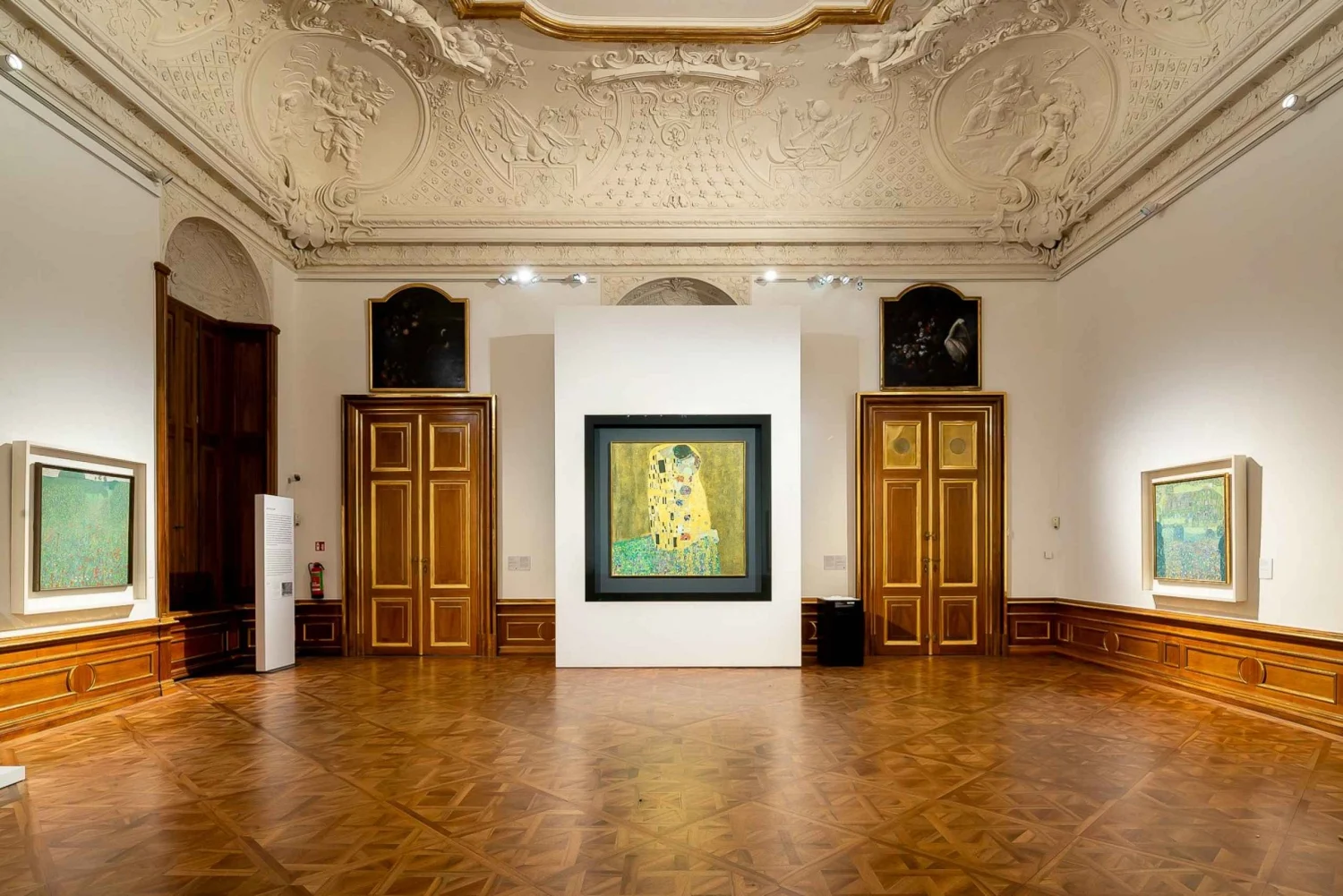
Beyond its permanent collections, the Belvedere also hosts temporary exhibitions that draw art enthusiasts from around the globe. These exhibitions range from thematic shows focusing on specific aspects of Austrian art to retrospectives of international artists. Such diversity not only enriches the visitor experience but also fosters a global dialogue on art and creativity. The Belvedere's commitment to presenting diverse art forms makes it a pivotal institution in Vienna's cultural landscape.
Educational programs and guided tours at the Belvedere enhance the visitor experience by offering deeper insights into the artworks and the historical context of the Belvedere Palace itself. For art lovers and history buffs alike, these programs provide a unique opportunity to engage with Austria's artistic legacy in an immersive setting. The palace's dedication to education and accessibility ensures that all visitors, regardless of their prior knowledge of art, can appreciate the beauty and significance of its collections.
The Upper Belvedere
The Upper Belvedere is not just an iconic symbol of Vienna's imperial past but also a testament to the artistic and cultural ambitions of its creators. Situated on a gentle hill overlooking Vienna, the Upper Belvedere forms a significant part of the historic Belvedere Palace Vienna complex, which also includes the Lower Belvedere and the beautiful gardens that lie between them. Constructed in the early 18th century as a summer residence for Prince Eugene of Savoy, the Upper Belvedere was designed by the prominent Baroque architect Johann Lukas von Hildebrandt. Its architecture is a stunning example of Baroque opulence, featuring elaborate facades, grandiose rooms, and expansive gardens that exemplify the period's aesthetic ideals.
The interior of the Upper Belvedere is equally impressive, housing one of Austria's most valuable art collections. This museum showcases a wide range of artistic masterpieces, from medieval and Renaissance works to the art of the modern era. The collection is particularly renowned for its extensive assortment of paintings by Gustav Klimt, including his famous "The Kiss." This piece, along with others by Klimt and his contemporaries, places the Upper Belvedere at the heart of Vienna's cultural life, making it a pivotal institution for both art lovers and historians alike.
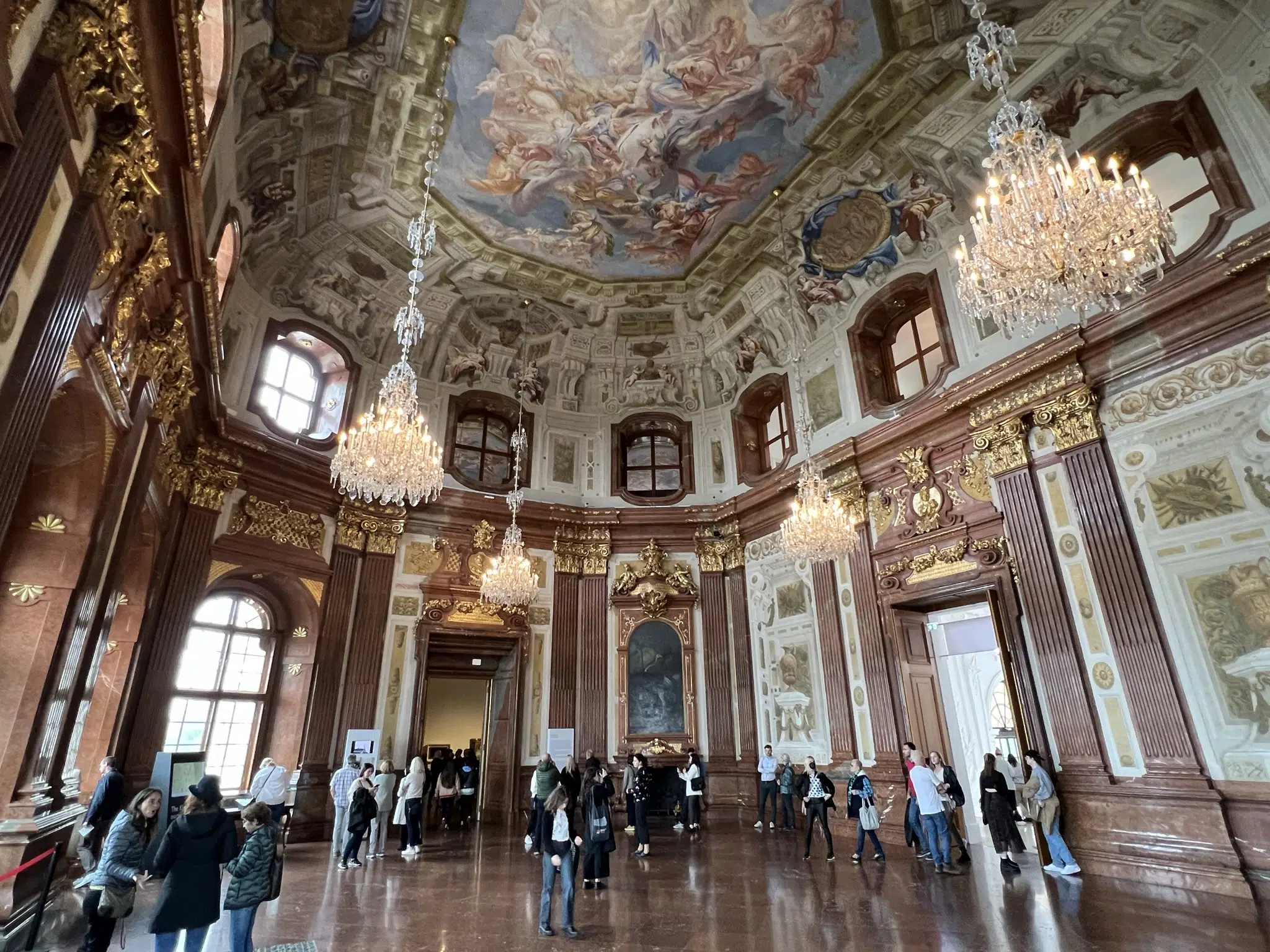
Beyond its artistic treasures, the Upper Belvedere also serves as a venue for historical exhibitions and cultural events that draw visitors from around the world. The palace's history, intertwined with that of the Habsburg monarchy and the subsequent fate of Austria, offers a fascinating insight into the political and social dynamics of Europe over the centuries. The Belvedere Palace Vienna thus stands as a monument to Austria's rich heritage, embodying the country's past glories and its enduring cultural vibrancy.
The gardens of the Upper Belvedere are another highlight, representing one of the finest examples of Baroque landscape architecture in Europe. Designed to complement the palace's grandeur, they feature a series of terraces, sculptures, fountains, and an array of floral arrangements that change with the seasons. These gardens not only offer a peaceful retreat from the bustling city but also provide stunning views of Vienna, making the Upper Belvedere a favorite spot for both tourists and locals seeking beauty and tranquility.
The Lower Belvedere and Orangery
The Lower Belvedere and Orangery, integral parts of the historic Belvedere Palace complex, stand as magnificent testimonies to the grandeur of Baroque architecture and the rich cultural heritage of Austria. It's a place where art, history, and architecture intertwine, offering a glimpse into the opulent lifestyle of European nobility.
Inside the Lower Belvedere, visitors can explore the Hall of Grotesques, the Marble Gallery, and the Golden Room, each offering a unique insight into 18th-century art and design. These spaces are adorned with elaborate stucco work, frescoes, and sculptures that reflect the artistic trends of the Baroque period. The exhibitions housed within these walls provide a comprehensive overview of the evolution of European art, making it a valuable educational resource.
The Hall of Grotesques
In the tapestry of Ancient Roman artistry, the 'Grotesque' emerges as a captivating genre, weaving whimsy with the arcane. Nestled within the expansive canvas of the Hall of Grotesques, one finds an intricate dance of semi-mythical motifs, blossoming into quasi-floral designs that whisper tales of gods and legends. At each corner, the artist's brush pays homage to the cyclical ballet of the seasons and the foundational quartet of elements. Amidst this grand spectacle, the windowless enclosures reveal Vulcan's anvil and the ethereal presence of the Three Graces, each brushstroke a testament to the fantastical narrative cradled within the heart of Rome's artistic soul.
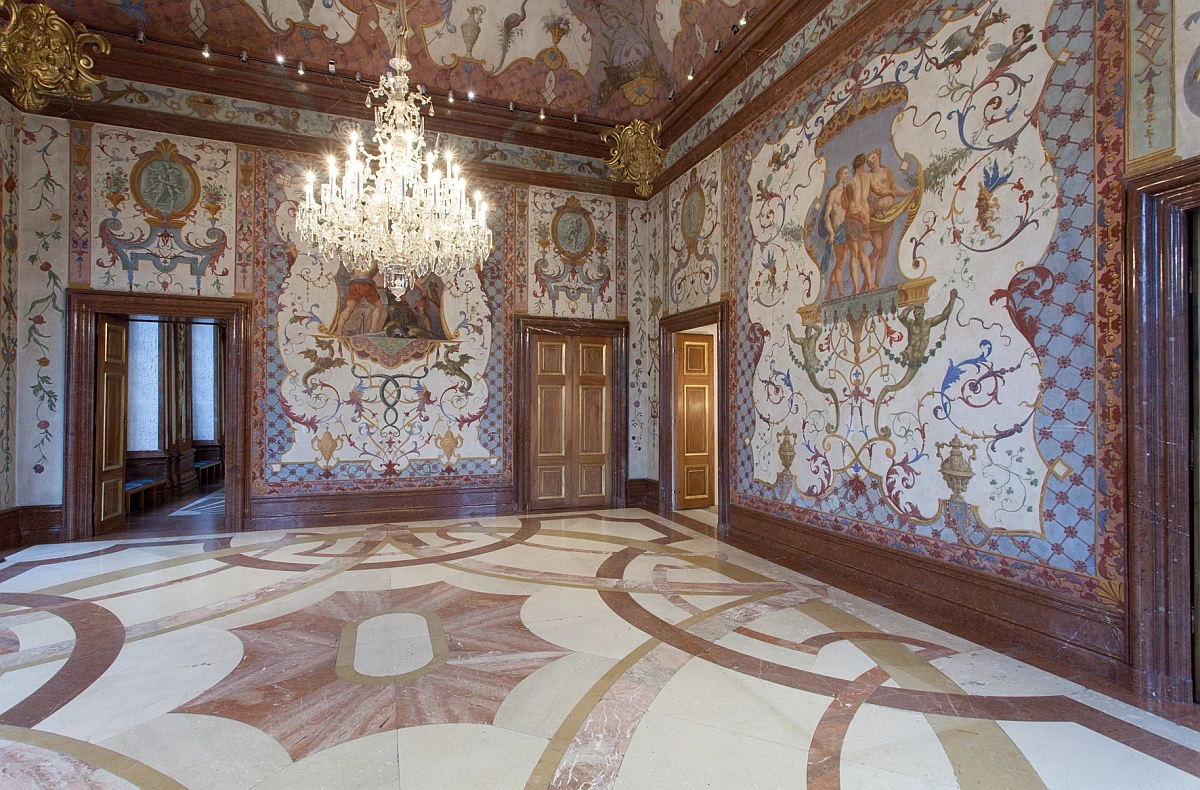
Marble Gallery
In the heart of Vienna's Lower Belvedere Palace, the Marble Gallery was erected in 1721, designed to house a trio of marble vestal virgin statues unearthed from the ancient ruins of Herculaneum. Today, the gallery's original purpose is a distant memory, replaced by the modern trappings of café culture—plastic laminate tables and the hum of an espresso machine dominate the space. The vestal virgins that once graced this room have vanished, leaving behind a legacy overshadowed by the passage of time. This transformation obscures the gallery's historic role as a vanguard of neoclassical art in Europe, a movement ignited by the Herculaneum discoveries and epitomized by the display of these enigmatic sculptures.
Golden Room
Initially conceived as a space for dialogue, the Golden Room underwent a transformation under Maria Theresa's vision, emerging resplendent with walls clad in gold, expansive mirrors, and eccentric, vivid paintings. Since the year 1765, this Cabinet has been showcased to the public. Position yourself before the mirrors, and behold an infinite procession of gold and multicolored arches, a visual spectacle that defies expectation.
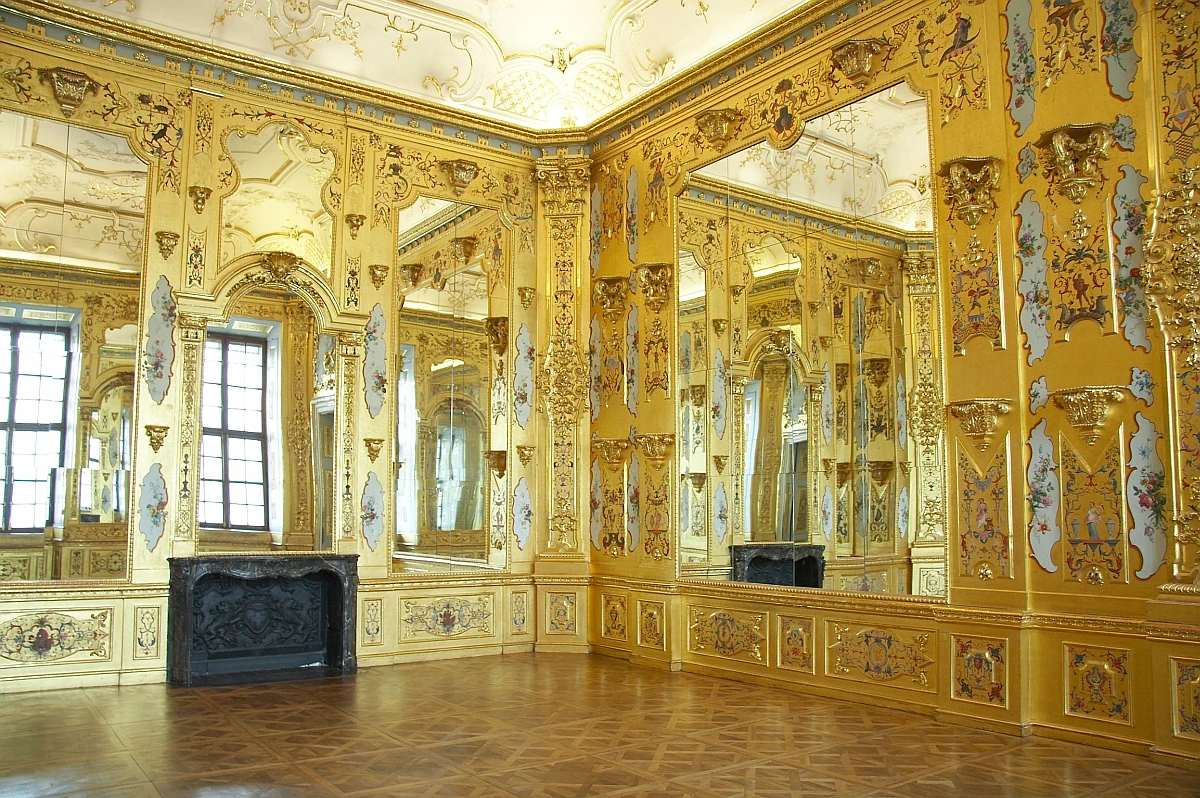
Orangery
Originally designed as a warm sanctuary for citrus plants, the Orangery has since transitioned into a dynamic gallery space, showcasing a rotating collection of unique art exhibitions. Following Prince Eugene's passing, the citrus trees found a new residence within the Pomeranzenhaus at Schonbrunn Palace. In a twist of fate, the Orangery underwent a transformation into stables by the year 1805, and then, marking a new era post-1918, it embraced its current role as the custodian of the Museum of Medieval Art.
The stables (Prunkstall)
In a bygone era, the Prunkstall was a sanctuary where the Belvedere Palace's horses likely lived in conditions that surpassed those of many contemporaries. Now, this space has transformed into the sanctuary for the gallery's medieval treasures. Envision yourself wandering through the historic stables of the Lower Belvedere Palace, where the essence of its original function whispers to you through equine reliefs adorning the ceiling and ancient stone troughs lining the walls of its grandest chamber.
Yet, today's occupants of the Prunkstall are of a different nature; the steeds now present are immortalized in the sacred artworks that grace the area: the triad of principal chambers unveils the medieval collection of the Belvedere, albeit the crowning jewels of this collection have ascended to the precincts of the upper palace.
In 1955, the Austrian State Treaty was signed in the Marble Hall of the Upper Belvedere, officially ending the occupation of Austria after World War II. This event marked Austria’s regained sovereignty and neutrality.
Belvedere Palace Vienna in Literature and Film
The allure of Belvedere Palace Vienna is not just confined to its architectural beauty or its role as a repository of art; it has also captured the imagination of artists, writers, and filmmakers, making it an iconic setting in literature and film. Its depiction in various media serves to reinforce the image of Vienna as a city where the past and present coalesce in a seamless tapestry of cultural richness.
In literature, Belvedere's opulent halls and meticulously landscaped gardens often serve as a backdrop for tales of intrigue, romance, and historical sagas that span centuries. Authors have been inspired by its aura, using it to evoke a sense of timelessness and to anchor their narratives in a place of undeniable beauty and cultural significance.
Similarly, in the world of film, Belvedere Palace Vienna has been the setting for countless scenes that aim to capture the essence of Viennese life and history. Its iconic status makes it a natural choice for filmmakers who wish to imbue their work with an air of sophistication and historical authenticity. Scenes set against the backdrop of the palace are instantly recognizable, conveying a wealth of meaning about Vienna's storied past and vibrant present.
In the tapestry of 2011 cinema, "A Dangerous Method" weaves a complex narrative, under the direction of David Cronenberg. This film, a collaboration across German, Canadian, and British film industries, features the talents of Keira Knightley, Viggo Mortensen, and Michael Fassbender, among others. It delves into the tangled web of relationships at the dawn of psychoanalysis, showcasing the interactions between Carl Jung, the pioneer of analytical psychology; Sigmund Freud, the architect of psychoanalysis; and Sabina Spielrein, a former patient of Jung who emerges as a trailblazing physician and one of the earliest female psychoanalysts.
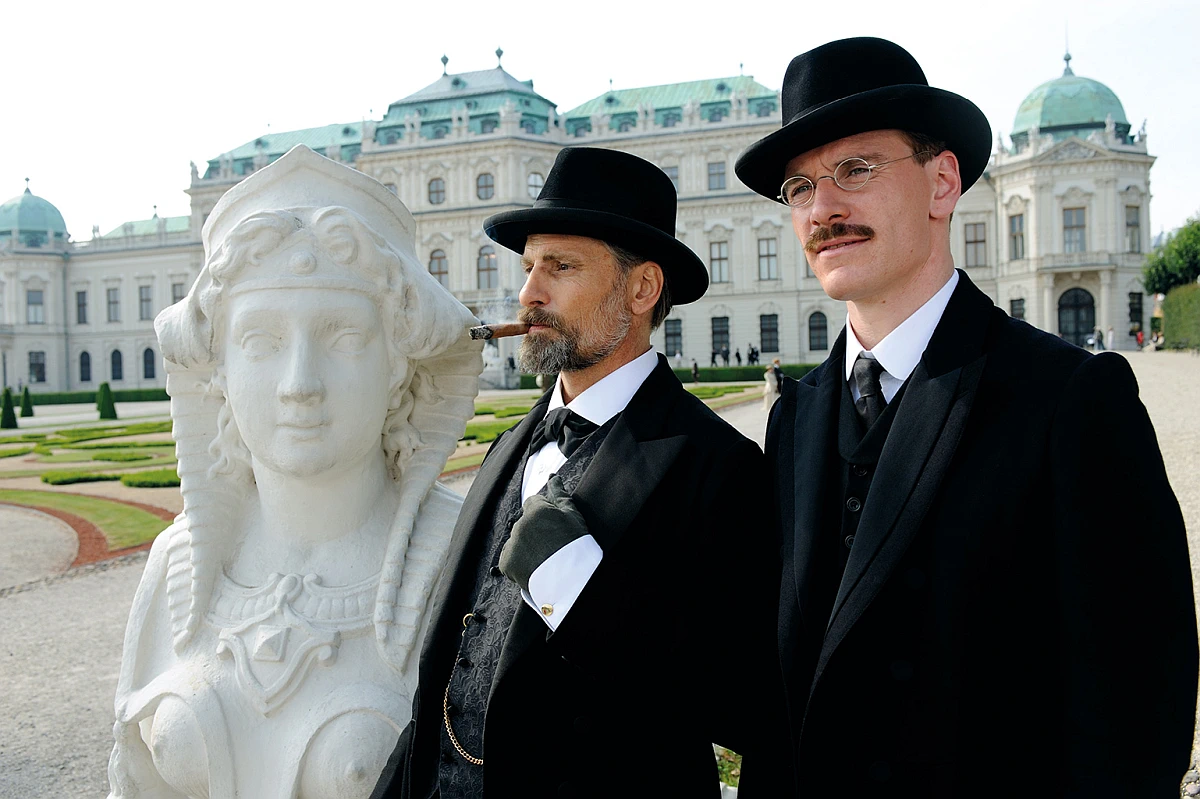
The iconic status of Belvedere Palace Vienna extends beyond its physical presence. It is a symbol of the artistic and cultural achievements of Austria, representing centuries of history, art, and architecture. As a favored setting in literature and film, Belvedere not only showcases Vienna's elegance but also its depth of history and culture, inviting audiences and readers worldwide to explore the rich tapestry of life that has unfolded within its walls. Through these depictions, Belvedere continues to enchant and inspire, cementing its place as a beloved emblem of Vienna's enduring legacy.
Visitor Information: Planning Your Visit
Visiting Belvedere Palace is a must for any traveler to Vienna. This section provides essential information to help plan your visit, from ticket prices to the best times to explore the palace and its gardens.
When planning a visit to the Belvedere Palace in Vienna, considering the timing of your visit can significantly enhance your experience. Here's a comprehensive guide to selecting the best time for your visit, taking into account different factors such as the day of the week, the season, and the time of day.
Weekday vs. Weekend
Advantage of Weekdays:
- Less Crowded: The Belvedere Palace, encompassing both the Upper and Lower Belvedere, is open throughout the week. Opting for a weekday visit is advisable as it generally sees fewer visitors compared to weekends. The reduced crowd means shorter queues and a more tranquil experience exploring the palace and its exhibits.
- More Peaceful Exploration: With fewer locals and tourists, particularly from neighboring areas and cities, weekdays provide a more serene environment. This allows for a more leisurely pace, enabling you to appreciate the artworks, sculptures, and the architectural beauty of the palace without the rush.
Best Time of the Year
Consider Spring and Fall:
- Avoiding Summer Crowds: Summer months attract a large number of tourists to Vienna, making places like the Belvedere Palace particularly crowded.
- Spring and Fall Benefits: Visiting during spring (March to May) or fall (September to November) is ideal due to the milder weather and thinner crowds. These seasons offer a pleasant climate, allowing you to comfortably enjoy both the Upper and Lower Belvedere Palaces and their gardens.
Best Time of the Day
Early Morning Visits:
- Opening Hours: The Belvedere Palace operates from 10 am to 6 pm. It's best to arrive early, right when the palace opens, to avoid the influx of visitors that typically occurs as the day progresses.
- Morning Tranquility: Early mornings at the palace are less crowded, affording you a quieter and more intimate experience. This is the perfect time to engage closely with the palace's extensive collection of artworks and sculptures and to stroll through the gardens without the bustle of larger crowds.
By considering these recommendations, you can plan your visit to the Belvedere Palace in Vienna to ensure a more enjoyable and fulfilling experience. Whether you're interested in art, history, or simply the beauty of the palace grounds, choosing the right time for your visit can make all the difference.
Guided Tours and Educational Programs in Belvedere Palace Vienna
Belvedere offers a range of guided tours and educational programs, designed to enrich the visitor experience with insights into the palace's history, architecture, and collections.
Guided tours at Belvedere Palace Vienna are meticulously curated to enhance the visitor experience, allowing guests to immerse themselves in the art, history, and architecture of the palace. These tours are led by knowledgeable guides who provide insightful commentary on the palace’s most significant works of art, including masterpieces by Gustav Klimt, Egon Schiele, and Oskar Kokoschka. The guided tours are available in several languages, ensuring that international visitors can fully appreciate the beauty and historical significance of the palace.
Educational programs at Belvedere Palace Vienna are equally impressive, offering a wide range of activities designed to foster an appreciation for art and history among younger audiences. Workshops, interactive tours, and special events are tailored to engage children and teenagers, making art history accessible and enjoyable. These programs not only educate but also inspire creativity and a deeper understanding of the cultural heritage preserved within the walls of the Belvedere.
Events and Venues at Belvedere Palace Vienna
Beyond its role as a museum, Belvedere Palace serves as a prestigious venue for events, offering a unique backdrop for weddings, concerts, and other gatherings.
This baroque palace, with its two magnificent buildings – the Upper and Lower Belvedere – amidst expansive gardens, serves not only as a museum housing Austrian art dating from the Middle Ages to the present day but also as a vibrant venue for a wide array of events. The opulence of Belvedere Palace Vienna provides a stunning backdrop for exhibitions, concerts, and various social gatherings, making it a pivotal cultural hub in the heart of Europe.
The Upper Belvedere, renowned for its impressive collection of Gustav Klimt paintings, including the iconic "The Kiss," regularly hosts art exhibitions featuring works from both national and international artists. These exhibitions are carefully curated to offer visitors insights into various art movements and epochs, enriched by the historical context of the palace itself. Meanwhile, the Lower Belvedere and the Orangery often feature thematic shows and contemporary art installations, bridging the gap between the past and the present.
Apart from its role as a museum, Belvedere Palace Vienna is a sought-after location for events ranging from elegant balls and sophisticated receptions to educational workshops and international conferences. The palace's gardens, with their meticulously designed landscapes, serve as an idyllic setting for outdoor concerts during the summer, attracting music lovers from across the globe. These events not only highlight the palace's architectural beauty and historical significance but also contribute to Vienna's reputation as a city where culture and history intersect seamlessly.
Belvedere Palace Vienna: A Living Legacy
Far from being merely a relic of the past, this historic complex, with its Baroque architecture and sprawling gardens, is a dynamic participant in Vienna's contemporary cultural scene. The palace not only preserves the glory of bygone eras but also serves as a vibrant venue for art exhibitions, cultural events, and educational programs that resonate with people of all ages. Its ability to blend historical significance with modern relevance makes Belvedere Palace Vienna an enduring symbol of the city's enduring vibrancy and creativity.

The palace's art collections, featuring works from the Middle Ages to the present day, are a focal point for scholars, artists, and visitors from around the world. With masterpieces by Gustav Klimt, including the iconic "The Kiss," Belvedere does not just showcase art; it inspires ongoing dialogue and creation within the artistic community. This ongoing interaction between the past and the present ensures that Belvedere Palace remains a source of inspiration for new generations of artists and art lovers.
Moreover, the palace's involvement in contemporary issues and its use as a space for public discourse highlight its role as a living part of Vienna's cultural landscape. Through its exhibitions and events, Belvedere Palace Vienna addresses themes relevant to today's society, encouraging reflection and discussion among its visitors. This blend of historical grandeur and contemporary engagement ensures that the palace is not just a monument to the past but a living, breathing entity that continually evolves and inspires. As such, Belvedere Palace remains not just a jewel in Vienna's architectural crown but also a beacon of cultural and intellectual enrichment in the heart of the city.
Tips and tricks for visiting Belvedere Palace Vienna
Visiting the Belvedere Palace in Vienna is like stepping into a living canvas of history, art, and architecture. Whether you're an art enthusiast, a history buff, or simply in search of breathtaking views, the Belvedere Palace offers a unique blend of cultural treasures and scenic beauty. In this chapter, we'll share essential tips and tricks to help you make the most of your visit to this iconic Viennese landmark, covering everything from the best times to visit, to must-see highlights, and practical advice for a seamless experience.
- Take your time to explore: Allocate about five hours for a complete visit to the Belvedere. Spend an hour each in the three zones of permanent collections, and use the remaining time for temporary exhibitions, gardens, and palace stables. This ensures a well-rounded experience of both the art and the historic venue.
- Get an audio tour: Embark on a sonic journey of art discovery by securing the Smartify app at no charge from the App Store. This innovative tool transforms your device into a window to the past, allowing you to unlock the stories behind any artwork you encounter with a simple scan. Beyond the boundaries of language, it offers a multitude of linguistic options. Moreover, it extends an invitation to deepen your connection with art from your abode, providing the means to explore the narratives of pieces you've witnessed, long after your visit has ended.
- Café Menagerie: Discover a hidden gem nestled inside the Upper Belvedere—Cafe Menagerie. This quaint spot offers the perfect respite for those wandering the museum's halls, inviting you to savor a moment of relaxation. Dive into an array of delectable cakes that beckon with their variety, and don't miss out on the chance to complement your treat with a soothing cup of tea or coffee. As you delight in the culinary offerings, let your gaze wander to the breathtaking views of the Palace that unfold before you, making this more than just a simple snack break.
- Gift shops: Explore the treasure trove that is The Belvedere's gift emporium. Here, nestled within its inviting confines, you'll discover an eclectic selection ranging from exquisite jewelry and chic apparel to literary treasures, curated art collections, elegant stationary, and bespoke home accents. Each piece invites you to take a fragment of The Belvedere's unique charm with you. What's more, for those who prefer the comfort of their own abode, a virtual storefront on The Belvedere's website offers the entire collection at your fingertips, ready to journey from our home to yours.
- Christmas Market: Should you find yourself immersed in the festive whirlwind that marks the year's close, seize the moment to explore the enchanting Christmas markets. Delight in the artisanal craftsmanship, unique clothing options, and the quintessential flavors of Christmas cuisine, all while being serenaded by the timeless melodies of carols. This experience promises to wrap you in the essence of holiday cheer.
- Book tickets in advance: As Austria's Belvedere Museum ranks among the top attractions, it naturally draws large crowds, particularly over the holidays, weekends, and school breaks. To ensure a seamless visit, it's wise to secure your admission online before you go.
- Check the weather forecast: Throughout the calendar, Austria beckons as a perennial magnet for travelers, with a slight pause during the chill of January and February. Yet, those braving the cold from December through February are rewarded with the enchanting Christmas markets. Conversely, a visit from June to August offers an embrace of the summer warmth, perfect for indulging in the vibrant cafe lifestyle.
- Avail public transport: Navigating to the Belvedere, one finds oneself at the nexus of public transportation options. Trams glide by, offering seamless connections, while a brief stroll – no more than ten minutes – brings the subway and bus stops into reach from its gates. Opting for public conveyance is advised, given the museum's absence of dedicated parking facilities for personal vehicles.
FAQs about Belvedere Palace Vienna
This section addresses common questions about Belvedere Palace, providing detailed answers to enhance understanding and appreciation of this iconic site.
What is the Belvedere Palace?
The Belvedere Palace is a historic complex that once served as the summer residence for Prince Eugene of Savoy in the early 17th century. Today, the Palace is renowned for housing an impressive collection of art from notable artists, making it a significant cultural and historical landmark.
Where is the Belvedere Palace located?
The Belvedere Palace is located at Eugen-Straße 27, 1030 Wien, Austria. Situated approximately 3 kilometers from the city center, it's easily accessible for visitors looking to explore its rich history and art.
What is Belvedere Palace famous for?
Belvedere Palace is celebrated for its exquisite Baroque architecture and its 800-year history. The palace is also home to famous masterpieces by artists such as Klimt, van Gogh, Messerschmidt, Funke, and Schiele, drawing art enthusiasts from around the world.
Why should I visit the Belvedere Palace?
Visiting the Belvedere Palace is a must for anyone interested in Baroque architecture and Austrian art history, spanning from medieval times to the present. The palace features beautifully ornate rooms, such as the Marble Hall, and houses iconic artworks by Gustave Klimt, Funke, Schiele, among others.
How do I book tickets to Belvedere Palace?
For convenience and savings, it's recommended to purchase your tickets online. Online ticket purchases allow you to bypass the long lines and ensure a smoother visit to this historic site.
How much does it cost to visit Belvedere Palace?
Ticket options vary, including direct entry to specific sections of the palace or combo tickets. Direct entry tickets start at €14.60, allowing access to areas like the Upper or Lower Belvedere or the Belvedere 21 Museum. Combo tickets begin at €28.17, offering access to multiple sections, depending on the ticket chosen.
Who designed the Belvedere Palace?
The palace was designed by the renowned Baroque architect Johann Lukas von Hildebrandt. It was originally constructed as a summer residence for Prince Eugene of Savoy, showcasing the grandeur of the era.
What are the Belvedere Palace's opening hours?
The Upper Belvedere is open from 9 AM to 6 PM, and the Lower Belvedere from 10 AM to 6 PM, Monday through Sunday. The Belvedere 21 Museum operates from 11 AM to 6 PM, Tuesday to Sunday, with extended hours until 9 PM on Thursdays. The museum is also open on Mondays during holidays.
What famous artworks are present in Belvedere Palace?
Belvedere Palace boasts an array of masterpieces by celebrated artists, including Klimt, Messerschmidt, Van Gogh, and Schiele. Among its most famous pieces is "The Kiss" by Gustav Klimt, a highlight for many visitors to the palace.
Conclusion
Belvedere Palace Vienna is more than just a historic site; it is a symbol of Austria's rich cultural heritage and artistic brilliance. A visit to Belvedere is not just a journey through the annals of history but an immersive experience into the world of art, architecture, and beauty.
Site location: Prinz-Eugen-Straße 27, 1030 Wien
GPS coordinates: 48.191829, 16.380835
Google Photos: Click here
Did you find our article interesting? For more content and exciting articles, follow our site where we regularly update our column to showcase the most beautiful cities in Europe!















